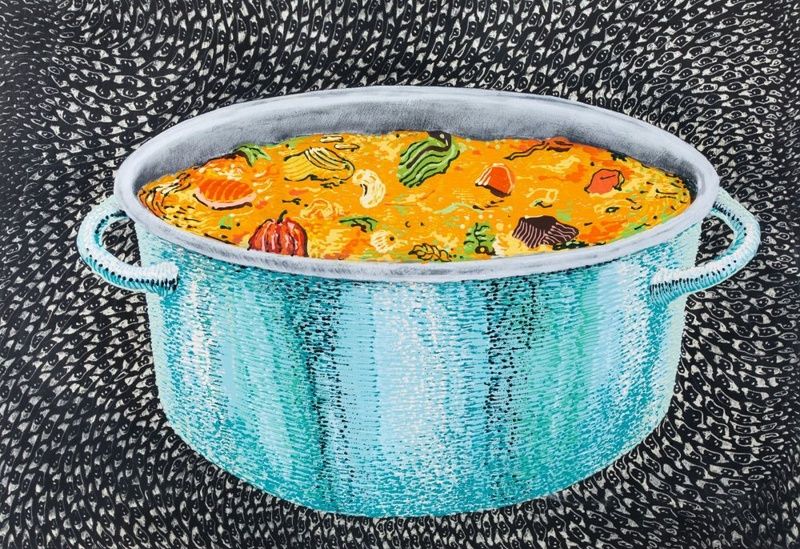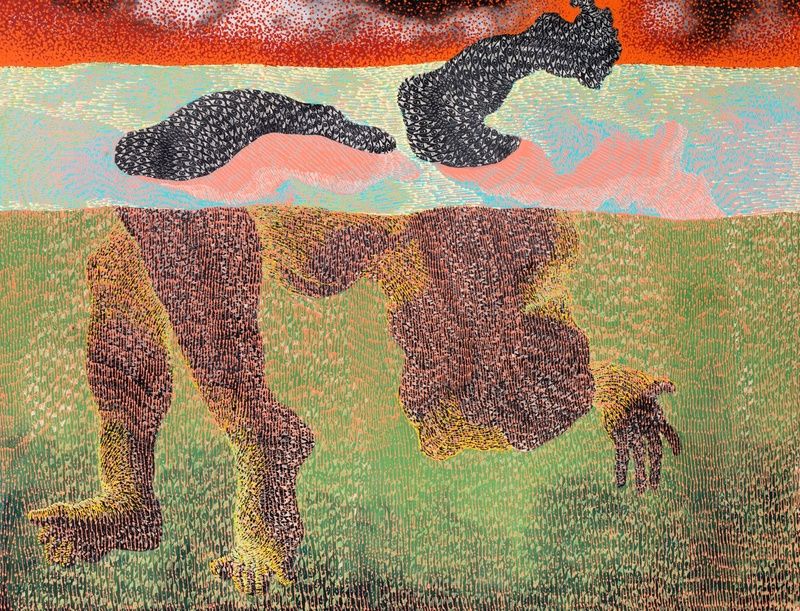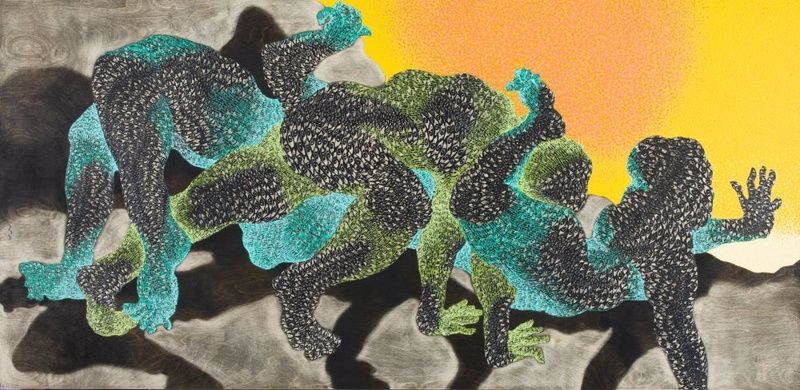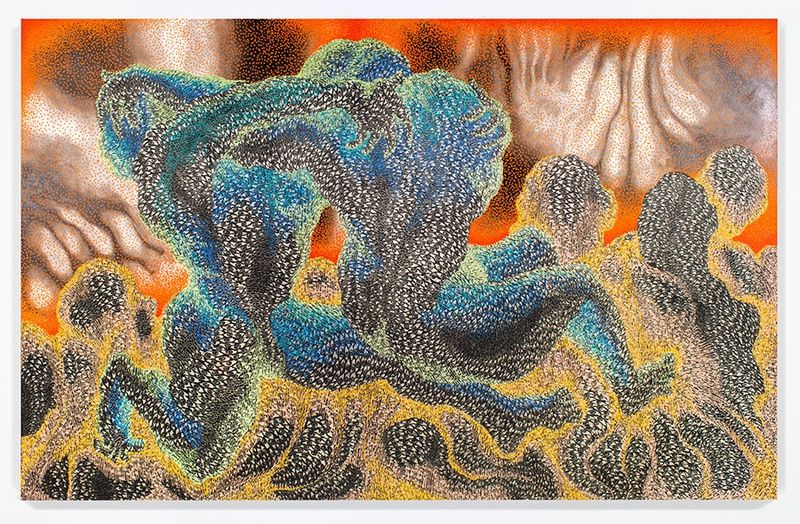James Fuentes Gallery
Didier William
Pulse
Didier William portrays scenes that are at once highly abstracted and physical, spiritual and historical—merging techniques of painting and printmaking, including carving and chine-collé, to describe figures in swirling states of movement. Pulse presents William’s newest body of work, in which the figure moves between vast skies, mountainous ground, and the depths of the ocean, which—as bodies in themselves—shift through states of expansion and dissolution. These bodies are faceless and yet all-seeing, forming through a dense mesh of carved eyes and painted color over a highly patterned ground. Although these scenes mostly appear on a larger scale, works such as Soup joumou and Odalisque (both 2020) offer yet another “layer” to William’s project, in which the artist focuses in on a singular object that itself becomes a kind of void or portal into something of greater personal and cultural significance. Altogether, while William places emphasis on the body in imagined states of action and submergence, these figures tumble together and apart precisely through the series of unknown shadows and shimmers that surround them. A monograph on William's work published by the gallery is forthcoming, featuring new and expanded essays by writers including Erica Moiah James, Roman Kalinovski, Jerry Philogene, and Zoe Samudzi.
“What is the meaning and role of the body in representing identity? Portraits—and traditional renderings of the body at work, at play, in battle, in repose—are classic and conventionally accessible means of conveying the moods and states of humanity. The forms in Pulse, Didier William’s latest body of work, gesture towards a more boundless figuration. Though William borrows from the structure and scale of Romantic landscape painters like J. M. W. Turner and Alexander Cozens, he fully rejects the classical, hierarchical proportions of that era, where the bigness of God’s nature necessarily dwarfs the comparatively featureless insignificance of human life, which is swallowed into the sublimity of the natural world. The Romantics painted during the French colonization of Haiti and during her revolution (1791–1804). The Napoleonic Wars and French Revolution, happening around the same time, were rendered visually; Haiti’s struggle, by contrast, was rarely depicted by that class of artists. William’s massive figures—a kind of canonical and ontological correction—inhabit the otherwise unoccupied and cavernous realm between the heavens and the earth; in the spirit of the world’s first independent Black nation, these bodies, both familiar and fantastical, eschew exclusionary Enlightenment ideas about physical proportionality. They reflect, instead, the artist’s contemplation of Black futurity.” —Zoé Samudzi, from the essay “Liberté, égalité, opacité,” 2020.
Didier William was born 1983 in Port-au-prince Haiti, and lives and works in Philadelphia, Pennsylvania. He earned his BFA in painting from The Maryland Institute College of Art and an MFA in Painting and Printmaking from the Yale School of Art. His work has been exhibited at the Bronx Museum of Art, the Figge Art Museum, the Crystal Bridges Museum of American Art, the Museum of Latin American Art (MOLAA), the Museum at the Pennsylvania Academy of Fine Arts, Fraenkel Gallery, Fredericks & Freiser gallery, and James Fuentes gallery, among others. He was an artist in residence at the SharpeWalentas Studio Program in Brooklyn, NY and has taught at several institutions including Yale School of Art, Vassar College, Columbia University, University of Pennsylvania, and SUNY Purchase College. He is currently Assistant Professor of Expanded Print at the Mason Gross School of the Arts at Rutgers University.



